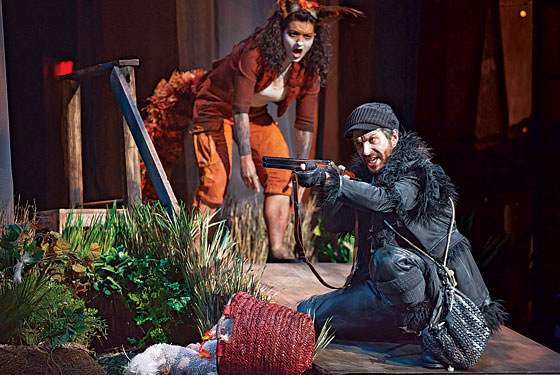
1. The Cunning Little Vixen
The Philharmonic has never seemed cheerier than it did performing Janácek’s charmer of an opera—and not just because of the kids in frog costumes or even because Isabel Bayrakdarian sang such a beguiling fox. In this sublime silliness, the orchestra rediscovered its mission: making live music that’s necessary and irreproducible.
2. Otello
The high priest of the podium, Riccardo Muti, led the Chicago Symphony in a Carnegie Hall performance of Verdi’s opera so overpoweringly nuanced that the singers hardly mattered. Muti made opera without sets and costumes seem less compromise than Platonic ideal.
3. Tempus Praesens
Sofia Gubaidulina is among the most seductively saturnine composers to emerge from the wreckage of the Soviet Union. Her violin concerto, written for Anne-Sophie Mutter, is a lesson in the intricate variety of pain, and Mutter gave a performance of scorching intensity. Only in music can desolation be so exciting.
4. Concentric Paths
Thomas Adès has grown from a London whiz kid into a 40-year-old of phenomenal originality, and his violin concerto tours the boundaries of madness, with ecstatic babblings, orchestral cataclysms, stammering brass, and limping dinosaur treads. New Yorkers had to wait six years for its concert premiere, a crystalline performance by Leila Josefowicz and the St. Louis Symphony.
5. Russian Cartoon Music
The Brooklyn Philharmonic, priced out of BAM, made for Brighton Beach, where it catered to a bemused Russian audience’s nostalgia for Soviet cartoons and their startlingly sophisticated scores. The shaggy, spirited performance, run by Alan Pierson, showed that a fine orchestra can come down off the acropolis without losing its soul.
6. Huelgas Ensemble at the White Light Festival
Lincoln Center’s White Light Festival hit its stride as an ecumenical gathering of sacred music, and in a church on Central Park West, the Huelgas Ensemble unfurled the brocaded vocal textures of Renaissance polyphony. Singers encircled the director, Paul Van Nevel, haloing him in glimmering choral harmonies from England, Burgundy, and Venice.
7. Inuksuit
On a summer afternoon, battalions of percussionists peacefully occupied Morningside Park for John Luther Adams’s drum-in. Now thunderous, now hushed, the sound changed with the vantage point, and one could find players lurking in the bushes, stationed like rams on rocks, or camped out on the lawn.
8. Faust
Des McAnuff’s Met production was silly yet grim, with a supermax-prison look and hints of mad science. But it couldn’t mar the tapestry of liquid threads woven by Jonas Kaufmann, René Pape, and Marina Poplavskaya, and conducted by Yannick Nézet-Séguin. McAnuff, despite himself, enabled great music.
9. Dan Deacon and So Percussion, Ghostbuster Cook: Origin of the Riddler
During the Ecstatic Music Festival, So Percussion teamed up with the swami of dance-party electronica, Dan Deacon. Ghostbuster turned out to be a loose, ornate symphony for soda bottles, marimbas, and one loud laptop. The piece does for the rave what Bartók did for Hungarian folk music: sublimate the urge to dance into a visceral concert experience.
10. Schubert Trios, the Chamber Music Society of Lincoln Center
Chamber music depends on intimate glances and familiar nods. Cellist David Finckel teamed up with his wife, pianist Wu Han, and his Emerson String Quartet partner, violinist Philip Setzer, for a program of Schubert’s piano trios that marinated for decades in the players’ relationships. The interpretations, like the scores, were tender and monumental, steamy and chiseled in stone.
Honorable mention:
Hungarian Echoes, the New York Philharmonic’s undeclared tribute to György Ligeti, which packaged three of his marvels with the works of two forerunners, Haydn and Bartók.
